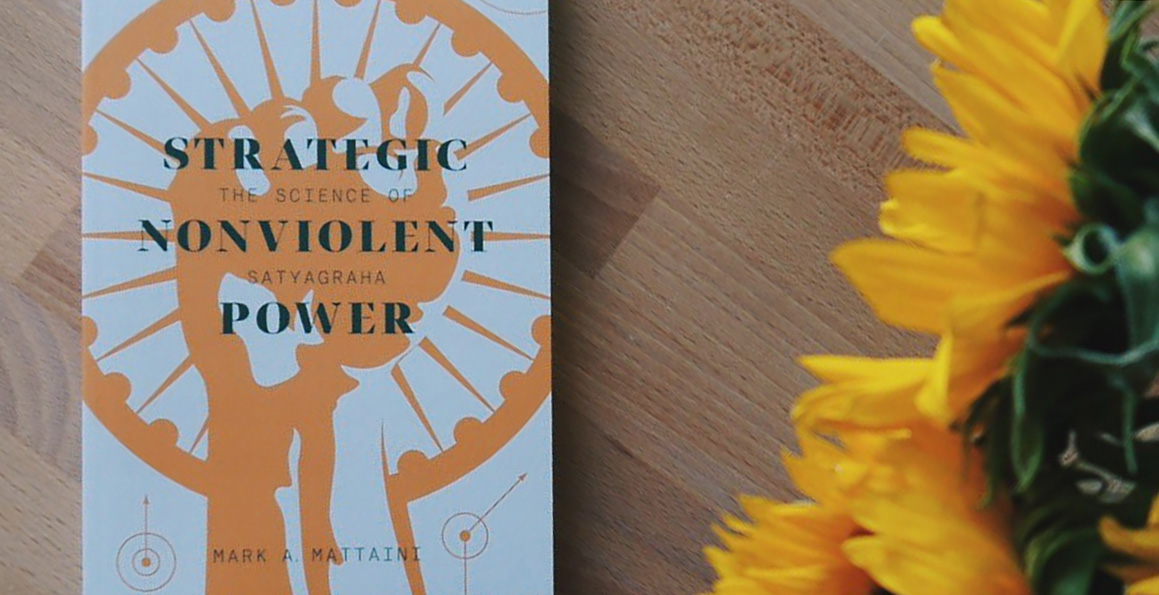“Of one thing, then, I am certain: a science of nonviolent struggle is clearly possible and therefore deserves the attention of the scientific, activist, strategic, military, spiritual, and diplomatic communities, as well as that of an informed public. A commitment to pursuing that science and realizing justice is our shared obligation.” –Mark A. Mattaini, Strategic Nonviolent Power
We are celebrating this year’s International Day of Peace by talking to Mark A. Mattaini, an associate professor emeritus at the Jane Addams College of Social Work, University of Illinois at Chicago. Mattaini is the principal developer of the behaviour analytic PEACE POWER strategy, which has been presented and implemented in at least twelve American states, as well as two Canadian provinces, and was recently introduced in a UNESCO-funded project in Brazil. His book Strategic Nonviolent Power was published by AU Press in 2013.
It’s been almost three years since Strategic Nonviolent Power was published. What advances have since been made in the area of behavioural science that have contributed to the way we understand nonviolent struggles?
A: There are three advances in scientific knowledge and resulting implementation that I believe are particularly important. First, there is growing recognition among behavioural scientists of the essential importance of behavioural systems analysis for social change efforts. The international community of behaviour scientists have been looking at this potential in recent years. The work of this group focuses on influencing social policy and addressing global challenges like climate change and violence at all levels. Constructive noncooperation is one area of study that is being included in these discussions, in part I believe as a result of the profound political, economic, and humanitarian challenges currently facing many nations (for example Brazil, the US, and Germany).
I have also seen an encouraging increase in the current efforts to intentionally include principles of nonviolent struggle into research being conducted by graduate students. Two examples from my own former students are a constructive project—The LYTE Collective—that provides respectful alternative services for street-involved and homeless young people that challenge current understandings and attitudes about this group, while offering opportunities for them to engage in social change efforts. (LYTE stands for Live Your Truth Everywhere; this project is led by Dr. Casey Holtschneider.) A second is an exploration of the potential for nonviolent activism among young people involved in or affected by street violence as an approach to violence prevention, led by Dr. Roberto Aspholm.
Finally, the Matrix Project sponsored by Behaviorists for Social Responsibility is exploring ways to better prepare behavioral science students and practitioners to address the most serious global and sustainability issues. Nonviolent action, including disruptive but especially constructive noncooperation, will be central to that effort. For those who might be interested, draft documents of the Matrix Project can be examined at www.bfsr.org.
Can you share an example of nonviolent resistance currently being used toward a peaceful end?
A: The current effort to block the Dakota Access Pipeline and related efforts that have so far blocked the Northern Gateway and Keystone XL pipelines among others are an important example of the kinds of nonviolent action that will be required to construct sustainable, livable, and just societies. Powerful nonviolent action has been required to seriously engage the courts and to achieve changes in government policies, and in each of these cases involved coalitions of native and First Nations peoples, farmers, advocacy groups, and others to leverage the necessary power. There are also important lessons in the occasions when violence occurred in these campaigns; in each case that violence had an overall negative impact on public support. On the other hand, in the Dakota Access case, the power of coalition-building became clear, supporting a united movement for indigenous rights allied to the Green Party, and climate change activists from across the United States. It will now be important for these disruptive strategies to be partnered with constructive noncooperative actions that provide workable and sustainable alternatives.
What are some additional resources readers can look for to help them understand the different types of nonviolent resistance available to them?
A: Perhaps the most valuable resource is the Albert Einstein Institution, founded by Gene Sharp. The Institution’s website provides a rich library of valuable materials, as well as a bookstore, both of which include materials in many languages that have been widely used globally. Also the film “How to Start a Revolution,” chronicling Gene Sharp’s work, is an inspiring tool for use in classrooms and within activist groups. The International Center on Nonviolent Conflict likewise offers many valuable resources for those wanting to learn more about civil resistance, including written materials as well as educational programs including workshops and summer institutes.


